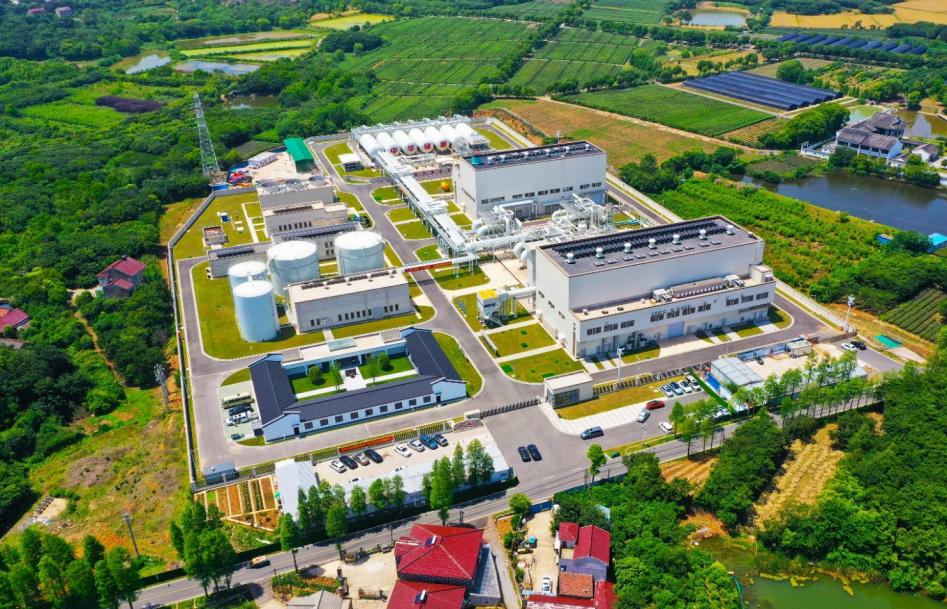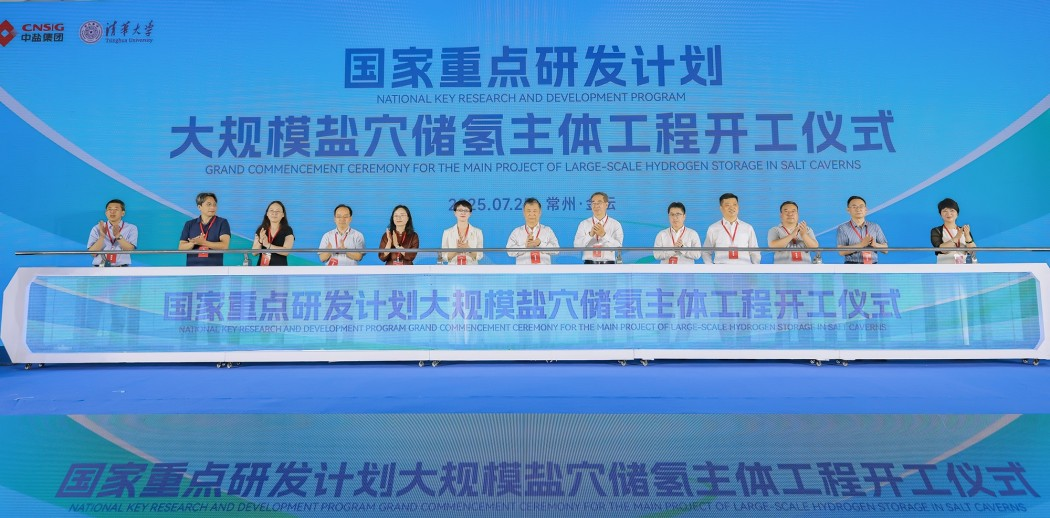Amid the wave of “carbon peaking and carbon neutrality,” new energy sources such as wind and solar power are becoming dominant forces. While facilitating the energy transition, they also profoundly disrupt the stability characteristics and operational modes of power systems. To address the challenges posed by the intermittency, volatility, and weak security support of new energy, novel energy storage technologies have become critical infrastructure for promoting large-scale deployment of renewable energy and consolidating the safety foundation of new power systems.
To meet the power system’s demand for long-duration, large-capacity, safe, and environmentally friendly storage technologies, Professor Mei Shengwei’s team at Tsinghua University has, over 15 years of relentless exploration and innovation, pioneered the non-combustion compressed air energy storage (CAES) technology route. They have achieved a breakthrough in industrial engineering practice, driving the formation and growth of the CAES industry.
Based on the core technologies developed by Mei’s team, USEM Technology has built a Tsinghua “entrepreneurial dream team” for industrialized non-combustion CAES, becoming the only domestic leader with a proprietary core process package and the capability to design, integrate, and construct million-kilowatt-level CAES power plants.
Technological Innovation as the Core Driving Force
Energy storage technology is a crucial support for new power systems. It not only addresses power imbalances caused by renewable energy integration but also significantly enhances system stability. Among various storage technologies, CAES stands out for its high efficiency, stability, large capacity, and environmental friendliness, making it one of the most effective ways to support high renewable energy penetration. However, CAES involves complex thermodynamic, electrical, and mechanical processes, including air compression, high-efficiency heat exchange, multi-medium thermal storage, high-pressure gas storage, and turbine generation, requiring coordinated control of multiple parameters such as temperature, pressure, and flow, posing significant technical challenges.
In 2011, after a comprehensive analysis of three CAES technologies at the time, natural gas-fired, liquid air and supercritical, Academician Lu Qiang and Professor Mei Shengwei first proposed a non-combustion CAES technology route based on compressed heat feedback. Over the following decade, Mei led a multidisciplinary team spanning electricity, heat, gas, machinery, and geosciences to develop key technologies including wide-operating-range efficient compression, high-pressure low-thermal-resistance heat storage and exchange, large-capacity low-cost gas storage, and wide-range air turbine generation. The team designed core equipment such as transient compressors, low-loss heat exchangers, multi-functional gas storage facilities, and wide-range air turbines. They also developed safety control and storage-network coordination methods for large-scale CAES systems and created a CAES power plant control system, forming a complete proprietary technology system.
Under Mei’s leadership, the team has achieved several world-firsts in industry-academia-research transformation. In 2014, they built the world’s first industrial-scale non-combustion CAES plant in Wuhu, Anhui. In 2022, they completed the world’s first commercially operating non-combustion CAES plant—the National Energy Storage Demonstration Project “Jintan 60MW/300MWh Salt-Cavern CAES Plant in Jiangsu”, with a power-to-power efficiency of 62.38%, internationally leading, completing over 1,300 charge/discharge cycles, ranking first among grid-connected CAES plants. In 2025, the team constructed the world’s first wide-range air turbine CAES plant in a cold-region artificial cavern and initiated the design and construction of the world’s first million-kilowatt-level CAES plant. To date, Mei has served as chief scientist in the construction of nine CAES plants, with 12 more under construction, providing 5,200MW/25,700MWh of regulation capacity.

Jintan 60MW/300MWh Salt-Cavern CAES Plant in Jiangsu
For these contributions, Professor Mei Shengwei has received the inaugural Gao Jingde Science and Technology Achievement Award in 2022 (only two recipients nationwide), the China Electrotechnical Society Special Prize for Technological Invention (the first such award in the society’s 42-year history), and the 2023 Ho Leung Ho Lee Science and Technology Innovation Award (Regional Innovation). He was also invited to deliver a keynote on CAES at the Ho Leung Ho Lee Summit Forum. His work has been featured in the Ministry of Propaganda and National Development and Reform Commission’s “Striving in the New Era” achievement exhibition and the China Association for Science and Technology’s “Innovation China” leading technology list.
Innovation Never Stops. Currently, Mei’s team is researching large-scale flexible CAES technology, exploring flexible gas storage for mines, underwater sites, and other new application scenarios. They are developing next-generation CAES technologies including pumped-coupled storage, coal-fired coupled storage, and underwater flexible storage, significantly improving plant site selection, operation, and configuration flexibility, accelerating large-scale and industrialized deployment. Simultaneously, they are pioneering safe, efficient large-scale geological hydrogen storage technology, inventing cavern design optimization and safety evaluation/control methods, forming an independent intellectual property-based geological hydrogen technology system. As chief scientist of China Salt Cavern Company and project leader for a national key R&D program, Mei is leading the construction of the world’s first ultra-large-capacity constant-pressure hydrogen storage facility based on dual salt caverns. These efforts strongly support high-quality development of China’s large-scale energy storage industry.

National Key R&D Program — Groundbreaking Ceremony for the Main Project of Large-Scale Salt-Cavern Hydrogen Storage
A Decade of Accumulation and Emergence of an Industry Leader
Scientific and technological innovation must ultimately be validated through industrialization. While Mei’s team achieved the original 0-to-1 technological breakthroughs, in 2011 his student Dr. Chen Renfeng founded Anhui USEM Technology Co., Ltd., beginning a new journey of industry-academia-research collaboration. The company has undertaken multiple CAES demonstration projects with Tsinghua University and others and invested 50 million RMB to establish the Tsinghua EEA–USEM Technology Joint Research Center for Flexible CAES. USEM Technology now possesses complete CAES solution development capabilities and the ability to design and construct million-kilowatt-level CAES plants. It is a nationally recognized “specialized and innovative” leading enterprise, setting the benchmark in China’s CAES industry.
(1) Deepening Key Markets: From 1 to 10
In 2023, USEM Technology secured 460,000kW/1.84 million kWh of CAES construction quotas in the first batch of new-type independent energy storage demonstrations in Inner Mongolia, accounting for 15% of the batch. In 2024, in large-scale storage demonstrations in Inner Mongolia, they obtained 2.1 million kW/10.5 million kWh construction quotas (Zhuozi and Xiwu projects), accounting for 30% of independent storage projects, with a total investment exceeding CNY 15 billion. Both projects began construction before June 30, becoming the world’s only two million-kilowatt-level CAES plants under construction.
(2) National Expansion: From 10 to 100
In 2025, USEM Technology is serving new power system development across provinces and regions, achieving precise project deployment based on geological, grid connection, and market conditions. Six CAES projects have been approved in Inner Mongolia, Xinjiang, Sichuan, Qinghai, and Henan, with a total installed capacity of 3 million kW.
(3) Continuing Technology Innovation and Cost Reduction
Mei’s team will leverage its first-mover advantage to: strengthen process iteration and increase CAES penetration in grid-side independent storage; deploy CAES at large renewable energy bases to replace synchronous generator functions with rotational inertia and reactive power support; advance new technologies such as CAES–coal, CAES–pumped storage, and underwater constant-pressure storage; and achieve a 30% cost reduction within three years through innovation and industrial chain integration. These efforts aim to construct 100 CAES plants by 2030.
Seizing the strategic opportunity of the energy transition, Professor Mei Shengwei and his team have successfully brought CAES technology from the laboratory to market, creating a highly promising “blue ocean” sector in the new energy field and making significant contributions to optimizing China’s energy structure.

















 News & Events
News & Events